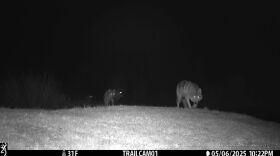-
This week on Farm News & Views, Bob Bragg looks at the rapid rise of agricultural drones and the impact of a new federal ban on foreign-made models, examines a UN report showing a slowdown in global food production, and closes with a reflective story about perspective, compassion, and the lessons we learn along the way.
-
This week’s Farm News & Views looks at a House bill to delist gray wolves, farm labor shortages driving food prices, and the history of mistletoe.
-
The Trump administration has announced a $12 billion aid package for U.S. farmers to offset tariff-related losses, but some farm-state lawmakers and specialty crop producers say more help may be needed.
-
Invasive zebra mussels have now infested at least 135 miles of the Colorado River, from the Utah border to Dotsero in western Colorado. And if these tiny pests flow into narrow irrigation pipes and tubes, they threaten to spoil the harvest of Colorado's sweetest crops.
-
Federal farm aid is expanding as USDA distributes emergency payments, announces a new $12 billion bridge program, and moves to prevent a screwworm fly invasion that could threaten U.S. livestock.
-
As gray wolves spread across western Colorado, ranchers face new livestock losses and weigh whether range riders can really reduce conflict in rugged terrain.
-
Ranchers in Colorado are frustrated by the Trump administration's recent decisions on beef imports and say they are creating uncertainty in the market that's bad for business.
-
The invasive annual grass is rapidly expanding across Wyoming, according to a new study, fueling wildfires and erasing native sagebrush habitat critical for wildlife.
-
Ag economists are divided on whether expected USDA trade aid will help producers or create new risks, as farmers face low prices, high input costs, and market volatility.
-
Warmer temperatures in November meant that less snowpack accumulated. But storms did increase soil moisture in the Upper Colorado River Basin, making future precipitation more likely to run off slopesides and boost rivers and streams.

Play Live Radio
Next Up:
0:00
0:00
Available On Air Stations






